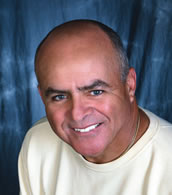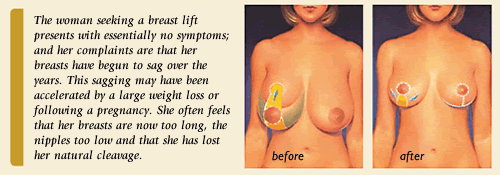|
Breast Lift or Breast Reduction?Joseph Rucker, MD, FACS Plastic surgeons assist people in making life-changing choices. We are called upon to reconstruct a breast for cancer survivors, rescue a smile from disfigurement or reinforce a foundation of self-confidence. During my 25 year career as a plastic surgeon I have noticed that one of the most misunderstood concepts is the difference between a breast reduction and a breast lift. The woman who is a candidate for breast reduction will often present with a history of an enlarged breast size since high school. She may have found it difficult to participate in athletic activities, and she will often present with complaints of back pain, neck strain, chest wall heaviness, bra strap grooving and on occasion rashes beneath her breasts. She will often have a breast size of D cup or larger. She may have tried conservative methods of easing her symptoms including: physical therapy for her back, heat treatments, chiropractic care, muscle relaxers for her back and even pain pills. She may have heard about the breast reduction procedure from a friend or may have been referred to us by her family physician.
So in essence we have the breast reduction patient presenting with symptoms because of the sheer weight of her breast, and the breast lift patient because of the shape of her breasts. The breast reduction procedure may well be covered by insurance because it is an attempt to alleviate the potentially harmful symptoms that come with the weight problem. With the breast lift candidate, the aim is to only improve the shape, and it is therefore considered a cosmetic procedure — one not covered by insurance. It is worth noting that fifty percent of my breast lift patients also opt to undergo a breast augmentation at the same time. They feel that they can better achieve that natural-looking cleavage with breast enlargement. The Procedure The Risks The Recovery Light activity is tolerated well in the first week. Most patients are never so incapacitated that they can not take care of their own basic needs. You will return to see the doctor one week after your procedure. All of your dressings are removed; your postoperative recovery and activity levels are again discussed as well as an anticipated date for your return to work. Light employment is tolerated after two weeks with heavy lifting and regular activity in 3 to 5 weeks. You are also given detailed instructions for care of your suture lines so as to help prevent excessive scarring. Your final consultation usually occurs 5 months after your procedure. The most common thing that I hear from my breast reduction patients is “I should have done this 10 years ago!” My staff at Rucker MD Plastic Surgery Clinic have gained a considerable amount of experience and knowledge in helping nearly 1,500 patients through their reconstructive breast surgeries.
Dr. Joseph Rucker, MD, FACS – Rucker MD Plastic Surgery Clinic |



